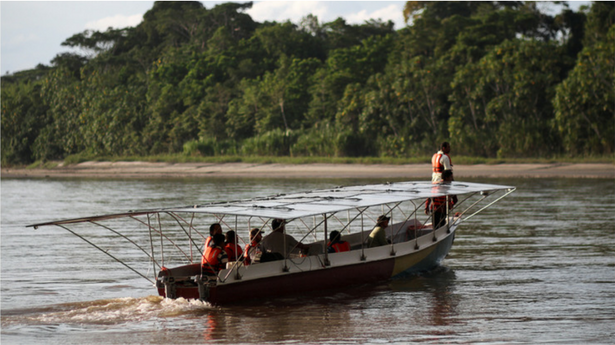
Traditionally, the Achuar people in Ecuador were semi-nomadic hunter-gatherers, traveling by foot or by canoe. Since missionaries arrived in their territory 50 years ago, the lives of the Achuar have changed dramatically- moving into settled communities with access to radio, internet, and air travel.
However, travel by boat is still a regular part of daily life. The indigenous communities float the local river systems to hunt and gather food for their families, attend school, receive healthcare, and visit a shaman.
But these days thousands of gallons of gasoline to propel the boats are flown into the Achuar territory at a high cost.
The motors contaminate the water, repelling fish and animals that the people depend on for food. The construction of roads into the territory as a precursor to oil extraction also impacts the Achuar, causing deforestation, and major contamination of the pristine forest.
After clearly seeing the impacts of environmental and social destruction on their way of life, the Achuar began searching for ways to provide their communities with reliable and affordable transport while still maintaining traditional values and protecting the environment.
With the help of a $5000 Greengrant, the Achuar began developing a solar-powered river transportation system, the first of its kind in the Amazon basin.
Today, the community transportation system serves nine Achuar communities on the Pastaza and Capahuari Rivers. The first boat can carry up to 18 passengers, and is staffed by three crew members from local communities who charge fares and oversee the trips made by the boat. The solar-powered system replaces contaminating fuels, and improves access to schools, health centers, and the transfer of agricultural goods.
Most importantly, the system was designed and executed by the local people, as a solution to fit their needs and increase opportunities for more sustainable travel in the region.
This year, the first boat launched, marking a monumental milestone for the local people. Watch this beautiful video, and learn more about the project on KARA Solar’s website here.
Photos: KARA Solar
